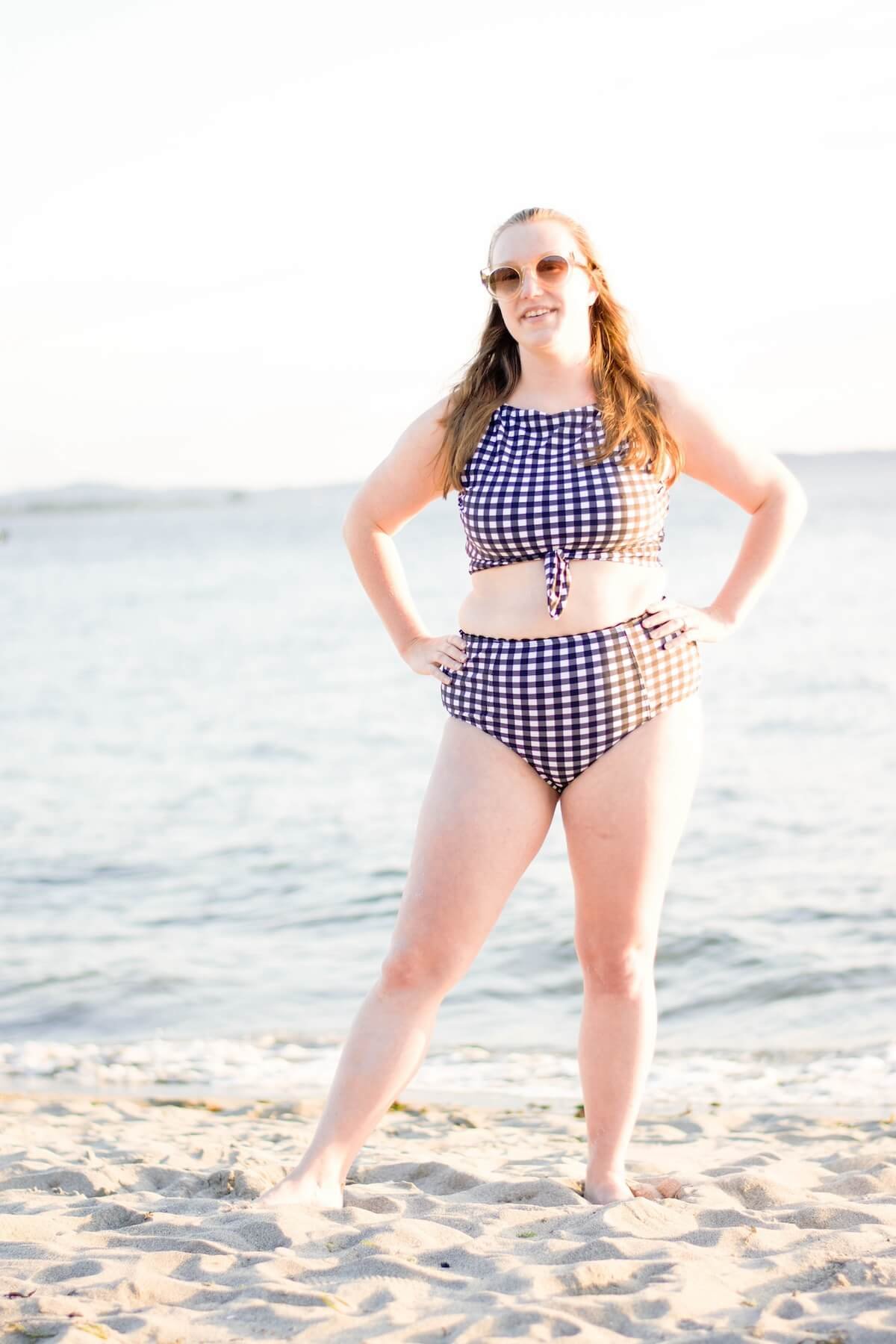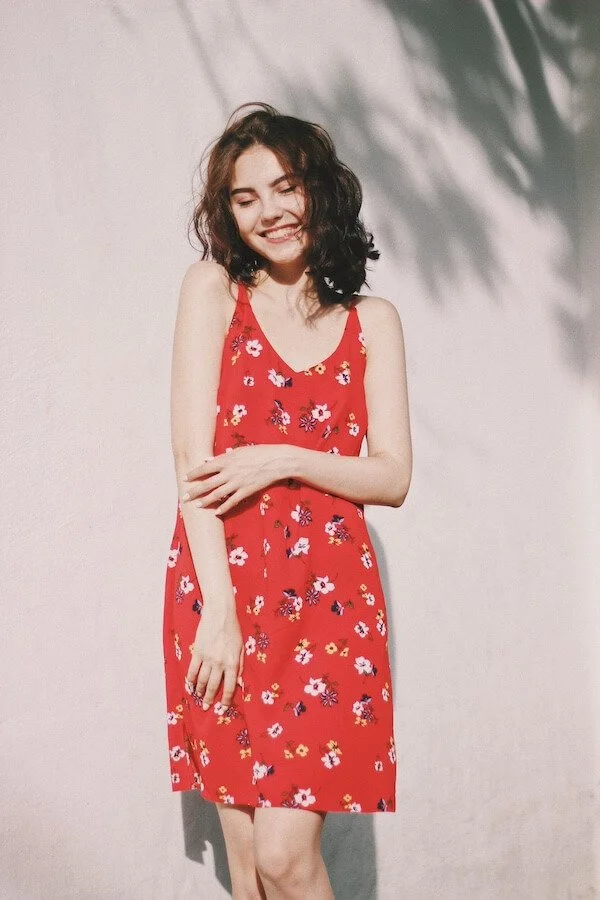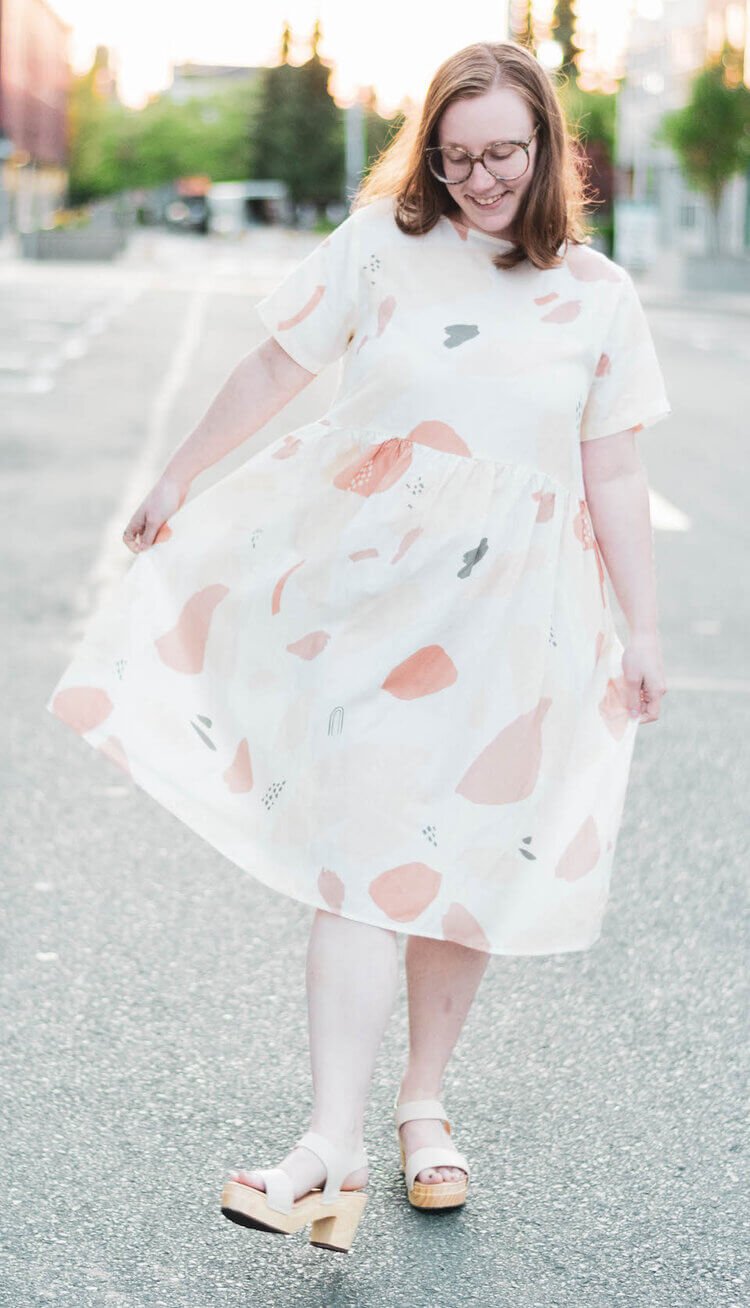7 Deadstock Clothing Brands for Sustainable Style
While perusing fashion labels, shopping vintage, or seeking sustainable solutions for your closet you may have come across the term deadstock fabric.
There are many clothing lines and collections making use of this widely available fabric, but there’s not often a clear understanding or explanation as to exactly what deadstock fabric is or how it comes about.
This guide explores the sustainability of deadstock fabric and features a few fashion brands using this fabric responsibly.
This post does contain some affiliate links. If you decide to make a purchase The Honest Consumer will receive a commission. Our commission is at no additional cost to you.
What is Deadstock Fabric?
Deadstock fabric started as a moniker for damaged or defective fabric but has since extended to include overstocked and surplus fabric due to overproduction from the fast fashion industry.
It may result from any number of errors and misjudgments in textile mills and garment factories, including:
printing errors
small damages to the fabric
overestimating the amount of fabric needed
fabric dyed the wrong color
not passing chemical or waterproof testing
surplus fabric that cannot be used or sold, including scraps from cutting room floors
The common, but often misconceived, belief is that deadstock fabric ends up in landfills or being incinerated.
While this may be the case sometimes, like when it comes to luxury brands trying to maintain exclusivity by burning their stock, it is not the case all the time. It’s sometimes the opposite.
Textile mills and garment factories may order too much of any given fabric because it’s cheaper to overproduce.
It allows them to save on labor; makes it easier to keep heavy, complicated machinery running; and feeds the demands of fast fashion.
They know they can get rid of any extras because they’ve found another use for it: selling it.
After all, burning or chucking your stock equates to burning or chucking money, so mills and factories are hardly about to let scraps go to waste, literally or figuratively.
What Actually Happens to Deadstock Fabric?
Small brands and start-up labels buy deadstock fabric for several reasons. For one thing, it’s cheaper.
For another, there’s no minimum order requirement, which is helpful when you’re a small label or just starting out.
You may not have the capital to invest in large amounts of fabric, so being able to buy leftovers and scraps at a reduced price can be a steal for a small or starting business.
Since there is frequently only enough fabric to produce one or two items of clothing, it also makes for unique and creative pieces, giving brands an exclusive selling point with collections featuring limited edition pieces.
In addition using deadstock fabric is commonly viewed as rescuing fabric that is deemed waste, an eco-friendly or sustainable angle is often punted as a further selling point.
Is Clothing Made from Deadstock Fabric Sustainable?
If the deadstock fabric is a result of scraps and leftovers that were headed to the landfill or an incinerator, then yes: it is both eco-friendly and sustainable.
Making use of deadstock fabric also means a decreased carbon footprint, because it means fewer virgin materials are being purchased, which means the use of the energy and water it would have taken to produce new materials is spared.
If deadstock fabric originates from overproduction, then we must take into consideration the industry problem of overproduction.
As helpful as it can be for small labels and start-ups, it comes with risks for them too. They may not know exactly what they’re purchasing because they don’t know why the fabric was rejected.
To complicate matters, mills and factories often don’t have to disclose why the fabric was rejected.
However, founders and designers within small businesses and start-ups usually started in the industry and have the wherewithal to test the fabric themselves and to repair any damages and faults.
If you are purchasing clothing from deadstock fabric collections, it’s important to be aware of where it may have come from.
Of course, it can be difficult to trace this process; the brand you purchase from may not be aware themselves and may purchase deadstock with the best of intentions.
Are Fashion Brands Using Deadstock Frabric Greenwashing?
This is a great questions. The short answer is it depends on the brand, but yes there are a lot of brands greenwashing deadstock fabrics.
For example we’ve seen fast fashion giants like H&M releasing specific clothing lines made with deadstock fabric.
Fast fashion brands can not be sustainable because their entire business model revolves around mass production and overconsumption.
While it’s definitely a better choice for name brands to use deadstock fabric rather than new fabrics…fast fashion brands are a big part of the problem and can actually cause that overproduction that causes deadstock fabrics to end up leftover.
What we really need from fast fashion giants is that they produce less and value quality garments so consumers don’t feel the urge to always replace what they’ve already bought.
When shopping for sustainable clothing that includes deadstock fabric collections, be sure to look for brands that are implementing other sustainable and eco-friendly practices through out their business– such as reducing waste and implementing resale or take-back programs – and that support their communities and treat workers ethically.
7 Sustainable Brands Making Clothes with Deadstock Fabric
If you’re looking for clothing brands using deadstock fabrics to make sustainable fashion, this list is a great starting place!
Malaika New York’s Zero Waste Design
Malaika New York is an ethical fashion brand that focuses on zero waste design and seasonless style. Their eco-friendly clothing is ethically made in partnership with a Turkish factory focused on sustainable production, fair wages, and safe working conditions.
Malaika New York uses sustainable materials such as GOTS or OEKO certificated cottons, deadstock fabric, ECONYL, and RWS certified wool.
Panero’s Slow Fashion Made with Deadstock Fabrics
Paneros creates high quality, slow fashion styles in small quantity runs that are designed and crafted to last for years to come.
Panero’s uses deadstock fabrics from natural materials such as cotton and linen, as well as semi-synthetics such as Tencel and Rayon.
Their limited run clothing is ethically made in Los Angeles and Indonesia.
Paneros has also committed to donating 1% of their profit to keeping the planet safe through the 1% for the Planet pledge.
Whimsy + Row Fashion Made with Deadstock Fabric
Whimsy + Row is a slow fashion brand focusing on limited runs and locally made garments. Whimsy + Row clothing is made with low impact fabrics like Certified Organic Cotton, Linen, TENCEL™, Cupro, Silk and Deadstock/Upcycled Fabric.
This ethical fashion brand visits their factories weekly to ensure fair wages are given and the workers are being treated fairly. You can use the discount code HONEST10 for 10% off your purchase.
Lovanie’s American Made Eco Fashion
Lovanie is a sustainable fashion brand based in Seattle, WA. Lovanie creates clothing for petite women.
Garments are ethically made in small batches in Seattle using 100% linen and deadstock cotton.
Use THEHONESTCONSUMER for 10% off your first purchase.
I was recently gifted the Lily Dress which I’ve been loving. This dress features pockets and a flowy fit perfect for summer.
Reformation’s Eco-Conscious Clothing
Reformation focuses on bold, sustainable fashion by investing in eco-friendly practices and valuing the people who craft their apparel. Reformation garments are consciously crafted using linen, deadstock material, viscose, and other sustainable materials.
Grant BLVD’s Black Owned Sustainable Style
Grant BLVD is a sustainable Black-owned fashion brand that incorporates the founder’s belief that intersectional design philosophy includes looking after people and the planet.
While Grant BLVD’s collection breathes new life into deadstock fabric and remains sustainable through the use of organic cotton, Lyocell, and Tencel, this brand also seeks to give new opportunities to formerly incarcerated women by welcoming them into the fold as part of the team.
We hope this guide has furthered your understanding of deadstock fabrics & given you a few sustainable clothing brands to consider checking out.

















